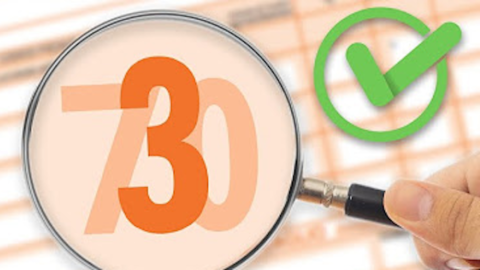After the first video dedicated to painting C of 730 pre-compiled 2019, let's now see how section 1 of Framework E is completed, dedicated to the deductions of health care costs and those for the mortgage, but not only.
In line E1 column 1 we must indicate the expenses for health services for which exemption from the ticket is recognised. The full list is on the Ministry of Health website. In this case the facilitation consists in the possibility of not losing the part of the deduction that has not found capacity in the tax due.
In column 2 you must write the entire amount of health expenses incurred for yourself or for dependent family members, excluding those indicated in column 1. The list of deductible health expenses is in the instructions of the Revenue Agency, starting from page 92.
In line E2 the health expenditure incurred for a non-dependent family member suffering from pathologies exempt from co-payment, the deduction of which has not found capacity in the gross tax owed by the family member, must be included.
The data is obtained from the annotations of the 730-3 model or from the RN framework of the 2019 Personal Income model of the family member.
The maximum amount that can be indicated in this line is 6.197,48 euros.
The deduction of 19% which is due on the sum of the expenses indicated in the staves E1 and E2 must be calculated only on the part that exceeds the amount of 129,11 euros.
Il line E3 it is intended for healthcare expenses for people with disabilities. In particular, it is the money used to purchase means necessary for accompaniment, walking, locomotion or lifting, and money spent on technical and IT aids which facilitate the self-sufficiency of the disabled person. For these expenses, the deduction of 19% is due on the entire amount.
If the health expenses indicated in the lines E1, E2 and E3 exceed a total of 15.493,71 euros, the deduction can be divided into four constant annual installments of the same amount: it is sufficient to tick the "Installation payments" box. The calculation of the deduction and installments will be performed by the person providing tax assistance (CAF, professional or substitute).
In line E4 the sum spent for the purchase of cars or motorcycles adapted to be driven by people with disabilities, or for the purchase of vehicles for the transport of people with disabilities must be indicated. The deduction is always 19%, it can be applied up to a maximum cost of 18.075,99 euros and is valid for a single vehicle. We can divide it into 4 equal annual installments: just write 1 in the "installment number" box. In the same box, write 2, 3 or 4 if the expense and the choice to install the deduction date back to 2015, 2016 or 2017 respectively. In all cases, the amount spent must be specified in full.
In line E5 we must include the expense incurred by the blind for the purchase of a guide dog. The 19% deduction is due for the entire amount of the cost incurred, but for the purchase of a single dog and only once in four years, except in cases of loss of the animal. This deduction can also be divided into four installments and the mechanism is the same as that explained for the previous line.
Il line E6 it is reserved for taxpayers who in the years 2015, 2016 or 2017 incurred healthcare expenses exceeding 15.493,71 euros and who chose to pay the deduction in installments in their previous tax returns. If payment by installments has been chosen in more than one of the previous declarations, it is necessary to complete several lines E6 using different forms. In the box it is necessary to write the number of the installment (2, 3 or 4) and in the space next to it the total amount of the expense.
Il line E7 it concerns mortgages. It is necessary to indicate here the interest payable, the ancillary charges (ie the expenses incurred for the stipulation of the contract) and the revaluation quotas of the variable rate mortgages. In all cases, the mortgage must have been taken out to buy a property used as a main residence, i.e. the house where you have your registered residence and habitually reside. But be careful: the deduction is due to the mortgage holder even if the property is used as a main residence by a family member (spouse or relative within the third degree). The deduction is 19% and is due on a maximum amount of 4.000 euros.
in staves E8, E9 and E10 other deductible expenses go. The codes identifying the deductions must be indicated in the boxes on the left and the corresponding expenses incurred in the spaces on the right. For example, we write 8 for the deduction on interest on mortgage loans for the purchase of properties other than the main residence (in this case the deduction is 19% on a maximum expenditure of 2.065 euros). Or 33 for the deduction on the payment of nursery school fees, or even 61 for the one on donations to non-profit organizations.
The complete list of codes with an explanation of the relative deductions is in the instructions of the Revenue Agency, from page 48 to page 54. The general tables, however, are on pages 44 and 45.






I wanted to know why on the pre-compiled form there is only the ever deductible portion of the loan, i.e. €2000, despite the fact that I have always deducted my wife's portion as well since she has always been dependent on me? Then why not the self-certification on the notices of the liquidation prospectus?..